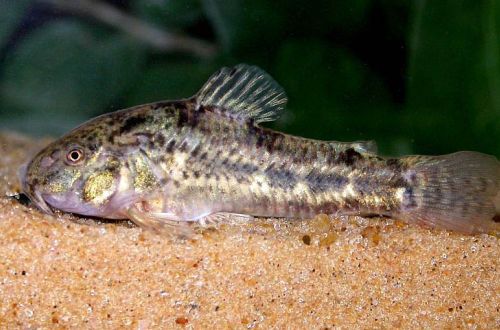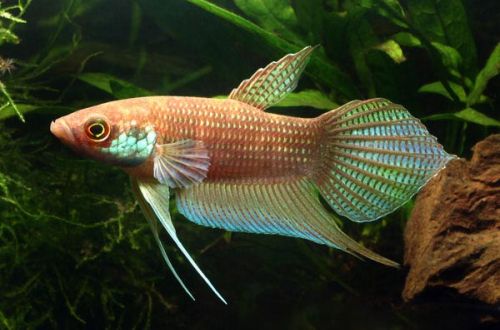
Glass bass
Glass bass, scientific name Parambassis pulcinella, belongs to the family Ambassidae (Glass perches). The fish is native to Southeast Asia, found in river systems in what is now Myanmar and Thailand. It inhabits sections of rivers with a fast flow, clean, oxygen-rich water. The substrates are usually composed of smooth stones and boulders.

Description
Adult individuals reach a length of about 8 cm. A characteristic feature of the species is a translucent body and a large hump, which is most massive in males.
The integuments of the body do not have a pronounced color, but at a certain angle of incidence of light they can cast blue hues.
Behavior and Compatibility
Peaceful active fish. It gets along well with relatives and other non-aggressive species. Due to its mobility, it can cause concern to slower neighbors in the aquarium.
Good compatibility is achieved with barbs, iris, some types of loaches.
Brief information:
- The volume of the aquarium – from 80 liters.
- Temperature – 23-27°C
- Value pH — 7.0–7.5
- Water hardness – soft to medium hard (8-15 dGH)
- Substrate type — stony
- Lighting – moderate
- Brackish water – no
- Water movement – moderate
- The size of the fish is about 8 cm.
- Food – any food
- Temperament – peaceful
- Keeping in a group of 4-5 individuals together with other species
Maintenance and care, arrangement of the aquarium
The optimal size of the aquarium for a group of 4-5 fish starts from 80 liters. The design is arbitrary, the main condition is the presence of a large free space for swimming. For this reason, the decor, its quantity and combination is selected at the discretion of the aquarist.
For long-term maintenance, it will be necessary to provide clean running water in an acceptable range of temperatures and hydrochemical parameters, as well as a balanced diet.
In maintaining the ecological balance in the aquarium, a productive filtration system and weekly replacement of part of the water with fresh water with regular cleaning of the aquarium from organic waste are of key importance.
Food
The basis of the diet can be popular dry food with the addition of live or frozen foods, such as bloodworms and brine shrimp.





